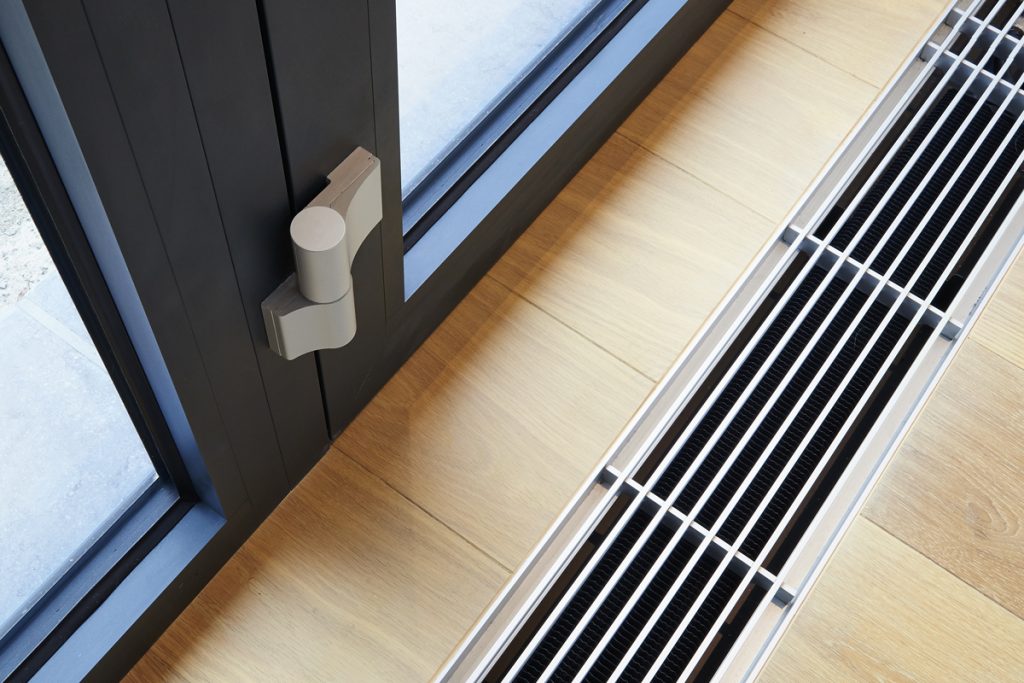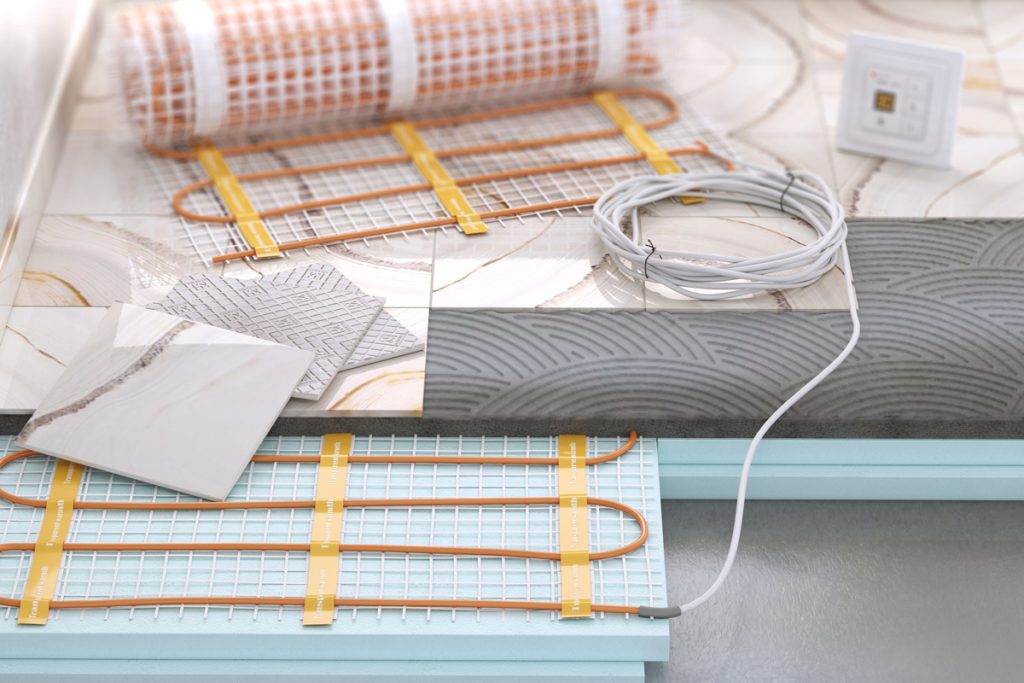Whether you are building a new house or just renovating the home you already live in, you may want to consider adding heating flooring as a home necessity, but at this point, you may be wondering just how long it takes for heated floors to heat up. Don’t worry, we’ve done all the research and are prepared to tell you the answers you need!
On average, it takes heated floors 30 to 60 minutes to fully warm up to optimal temperature. However, this timing depends on the type of flooring that you are planning to use -
- Air-heated floors take up to 2 hours to heat up.
- Electric heated floors take around 30 minutes to reach their target temperature.
- Hydronic heated floors can take up to a day to fully heat up but are typically left warm for days on end.
So why these differences in the length of time it takes to heat up the floor? And what other pros and cons do the different types of heated floors have? Keep reading as we go deeper under the surface to find out the answers.
![A room with a heated floor installation using wires for heating, How Long Do Heated Floors Take to Heat Up? [By type of floor]](https://hvacseer.com/wp-content/uploads/2020/10/How-Long-Do-Heated-Floors-Take-to-Heat-Up-By-type-of-floor.jpg)
How Long It Takes For Heated Floors To Heat Up
There are three types of heating floors: air-heated, electric, and hydronic flooring. Since these flooring types all work differently, this means that the time that it takes for them to heat up differs as well.
Air-Heated Flooring

Air-heated floors work by circulating the air that is already in the home through the floor ducts. Since air does not hold heat very effectively, these floors warm up much slower than the electric and hydronic floors. Air-heated flooring is often paired with solar power. This is wonderful for the environment, but lacking for your home as it is only effective during the day when it can pull power from the sun.
Due to the challenges mentioned, it takes an air-heated floor nearly 2 hours to fully heat up. The best part about the air-heated flooring is the fact that it is so energy efficient. However, it is not very realistic compared to electric heated or hydronic heated flooring.
Electric Heated Flooring

Electric heated flooring is an incredibly effective method to use in order to get those warm, toasty floors that you’re looking for! Electric flooring works through heating cables that are located underneath the flooring. As these cables warm-up, the floor naturally heats as well, causing the entire room to adjust.
When turned up, you’ll be able to notice a difference in the floor’s temperature within 5 minutes. It will typically take about 30 minutes for the floors to heat to their optimal temperature.
Electric heated flooring is generally used in only one to two rooms of the house, as it would be pretty costly to heat a whole home by generating this source of energy. The best part about electric heated flooring is how quickly it works. It is absolutely the best choice if you are just wanting to heat the floors in one room of your home. However, electric heated flooring is expensive, so if you want to heat all of the floors in your home, you should probably consider a different option.
Hydronic Flooring

Hydronic heated flooring is fairly similar to electric heated flooring. The main difference is that instead of electric coils under the floors, hot-water tubes are used to generate heat. Hydronic flooring is typically used to heat the entire home, rather than just one or two rooms, as it is easier to line the home with the hot-water tubes.
It takes about 1 day per 1,0000 square feet to heat your whole home through the power of hydronic flooring. It may be worth it as hydronic flooring seems to be both the most cost-effective option as well as the most energy-efficient for the quality.
Hydronic flooring is not the best option if you are just wanting to click a button and have instantly warm floors before a shower. But if you are interested in utilizing a cheaper, silent source to heat your entire home through the floors, look no further than hydronic flooring. Once you turn on your hydronic floors for the season and give them the proper amount of time to warm up, you won’t have to worry about clicking a button and waiting 5 minutes, as your floors will always be nice and warm.
Does A Heated Floor Heat The Room?
All heated floors contribute to the overall warmth of the room! Since air-heated floors are not the strongest form of heat, they contribute the least to the overall warmth of a room. Electric and hydronic flooring do a great job of heating up a room.
If you are hoping to just warm one room it is a great option. It's important to note that it's rather expensive to implement in an entire home. If you want to heat your whole home through heated flooring, hydronic flooring is the best choice.
Do Heated Floors Use A Lot Of Electricity?
Overall, heated floors are an incredibly energy-efficient way of heating a home. Heated floors use less than or just as much energy to heat the home as other heating systems. This includes furnaces, boilers, and other electric systems.
Should Heated Floors Be Turned Off At Night?
Heated floors should not be turned off at night in an attempt to save money or energy, as this idea backfires on itself. When the heated floors are turned off in the evening, the home cools off. When the heated floors are turned back on in the morning, the energy has to work extra hard in order to warm the system backup completely again.
In the end, this wastes more energy and money than just leaving the system turned on overnight would.
Enjoy Your Warm Floors!
No matter what option of heated floors you choose, you will be guaranteed to have warm toes all winter long at the touch of a button. All of these heating flooring systems will heat your home up quicker and better than other heating systems would.
Whether you decide to go with air-heated floors, energy heated floors, or hydronic heated floors, you will be nice and warm in just a short amount of time.
Before you go, be sure to check out these other articles that may be of interest:
